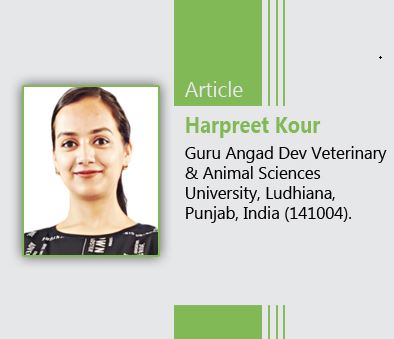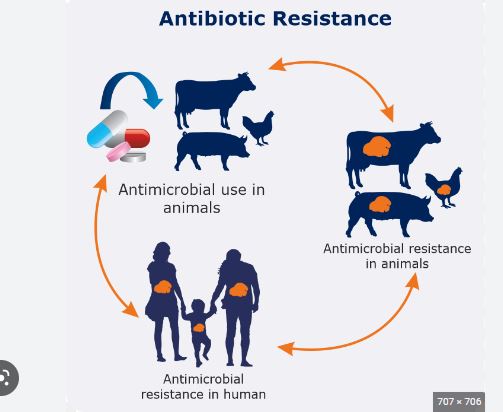Growth promoter term is referred to any medication that eliminates or inhibits bacteria and is given to food animals at a low, subtherapeutic dose. They are applied to improve production efficiency and growth rate of animals. The usage of antibiotic growth promoters has increased along with the expansion of livestock farming. Farm animals produce less when they are infected, but it has been proven that using low-dose antibiotics and antimicrobials can effectively control the infectious agents.Antibiotic growth promoters are used to help growing animals digest their food more effectively, reap the most nutritional benefits from it, and grow into robust, healthy adults, according to the National Office of Animal Health (NOAH, 2001).
Growth promoter use is mostly an issue with intensive farming practices, and industrialized nations are more likely to experience this issue than emerging nations. As per the market overview, animal growth promoter market is estimated to register a Compound Annual Growth Rate(CAGR) of 5.3% during 2022-2027. The animal growth promoters market is fairly consolidated, with many large and small international players occupying the overall market globally. The major players are Cargill Inc., DSM, Elanco Animal Health Inc., Zoetis Inc., DuPont de Nemours Inc., Alltech Inc., Novozymes A/S, and other companies. Thus, growth promoters are primarily used in agricultural animals to promote growth, enhance protein and fat distribution, and improve the feed to muscle conversion ratio.
Although the precise mode of action of growth promoters is unclear, it is thought that antibiotics suppress sensitive bacterial populations in the intestines.In order to explain how they work, four theories have been put forth: (1) nutrients may be protected from bacterial oxidation; (2) nutrient absorption may improve due to a thinning of the small intestine barrier; (3) antibiotics may reduce the production of toxins by intestinal bacteria; and (4) there may be a decrease in the frequency of subclinical intestinal infections.Antibiotics are used to speed up the growth and improve feed efficiency especially to large number of meat-producing animals, which are raised quickly to slaughter weight before they achieve physical maturity. For therapeutic and preventative purposes, they are supplied with feed and water, however when used as growth promoters, they are added to feed at a lower dosage than when used for treatment.
Different types of growth promoters
Many antibiotics have been used as growth promoters and few of them are explained below:
- Bambermycin
A glycolipid antibiotic generated by Streptomyces species including S. banbergiensis, S. ghanaensis, and S. ederensisand is also known as moenomycin. Flavophospholipol, and flavomycin is a glycolipid that contains phosphorus, serves as the product’s primary component. Bambermycin is solely utilised as an antibacterial in animal diets that promotes growth. It binds to Penicillin binding proteins (PBPs) and prevents cell wall polymerization. Although PBPs are the primary site of action for -lactams, bambermycin and β-lactams do not share any cross resistance. It is generally effective against gram positive organisms, while it can occasionally suppress some gram negative microorganisms as well.
- Streptogramins
They always have an A component and a B component that work together synergestically. They are part of the class of antibiotics known as macrolides, lincosamide, and streptogramin group of antibiotics. The macrolides and macrocyclic lactone peptolides make up streptogramin A and B, respectively. The lactone ring is absent from lincosamides. For the most part, three streptogramins—virginiamycin, pristinamicin, and quinupristin/dalfopristin—have been marketed to promote growth.
- Avilamycin
It is solely used to promote growth and is a member of the oligosaccharide (orthosomycin) category of antibiotics and is produced by Streptomyces viridochromogenes. It acts by attaching to the ribosome’s 30S subunit and interfering with the polypeptide synthesis process by changing how aminoacyltRNA binds to the ribosomes. They mostly combat gram positive bacteria.
- Bacitracin
It is an antibiotic polypeptide produced by Bacillus licheniformis. It consists of multiple important components, with A, B, and C being the most significant. It is utilised as a growth enhancer and is more stable as zinc salt. Although there are many distinctions between the bacterial species, bacitracin is primarily effective against gram-positive bacteria.
- Ionophores antibiotics
Most ionophores antibiotics are produced by Streptomyces spp., although Streptoverticillium, Nocardiopsis, Nocardia and Actinomadura spp. are also known to produce them. In addition to the organic byproducts of microbes, there are a number of chemically altered ionophores. They are a part of a large class of ionophores, only a small portion of which are utilized to stimulate animal growth or prevent infections. In Europe, monensin, lasalocid, salinomycin, narasin, and maduramycin are used as growth promoters. Only salinomycin and monensin are legitimately recognized as growth enhancers for pigs and cows, respectively. The other approved ionophores can be used as coccidiostats in chicken feed. The ionophores incorporated into animal feed all belong to the carboxylic group, the best-known representatives of which are the antimycotic agent nystatin and amphotericin B. The dosage of these products needs to be handled carefully as high doses can cause a reduction in growth performance.
- Other growth promoting antibiotics
These include quinoxalines (carbadox and olaquindox) which inhibit DNA synthesis, efrotomycin which is used solely as growth promoter etc.
- Hormone implants
For greater development and increased feed efficiency, it is currently common practice in the beef cattle industries to implant hormone growth promoters. The growth that occurs during the suckling, growth, and finishing phases of meat production may be improved by these hormonal implants. In the form of depot capsules, they are implanted behind the skin of the animal (often behind the ear), where they release a certain dose of hormones over a predetermined period of time. Commonly used hormonal implants include natural hormones, (estradiol, testosteroneand progesterone) and synthetic ones (trenbolone acetate andzeranol).
- Growth hormones
Growth hormone is a single polypeptide chain comprising 191 amino acids. It increases weight by stimulating the metabolism and protein accumulation with a simultaneous fat deposition. Bovine somatotrophine is a bovine growth hormone that is produced by pituitary gland of cattle and is basically an insulin like protein hormone. During lactation, it mobilizes body fat for use as energy and diverts feed energy towards milk production rather than tissue synthesis. In beef cattle, it is associated with improved feed conversion and lean carcass, with decreased carcass fat.
Alternatives to antibiotic growth promoters
The indiscriminate use of antibiotics is raising a concern of antibiotic resistance and presently there are only a few antibiotics against which resistance hasn’t been developed. Thus, there is a need to reduce the use of antibiotics as growth promoters to minimize the risk of resistance.A growth promoter’s quality must be evaluated before it is outlawed or gradually phased out of use. There are two strategies to lessen reliance on growth boosters. The first is the creation of substitutes that function similarly to antibiotics and encourage growth. The other option is to increase the health of the animal. It has been shown that growth promoters are most effective in the worst possible situations, such as when an animal is ill and its living surroundings are unclean. The actual requirement for growth promoters may be eliminated if their local environment was improved, with overcrowding decreased and infection control strategies applied.
- Competitive exclusion products
These in-feed microorganisms are marketed as being “friendly” and include a variety of bacterial species. Potential pathogens are prevented from colonizing the gut and causing infection by enabling such bacteria to colonize the gastrointestinal tract (GIT). These products are given to newborn animals, particularly chicken, in order to colonize the GIT and avoid infections with Salmonella and Campylobacter. In order to recolonize a gut that may have been cleared by the antibacterial action of the medications, these items are also administered to animals that have had therapeutic antibiotic treatment.
- In-feed enzymes
These enzymes are given to the diets of pigs and poultry and operate by aiding in the digestion of some feed ingredients that the animal may have trouble digesting, such as glucan, proteins, and phytates. They are created as by-products of bacterial and fungal fermentation and appear to exclusively benefit the animal.
- Probiotics
In monogastric animals, probiotics are live microorganisms added to the meal as a feed additive. The probiotic idea is essentially predicated on the notion that the makeup of the intestinal microbiota may be influenced by the direct feeding of microbial cultures.Selected microbe strains that are thought to have positive impacts on digestion or animal health are employed. The most often used probiotic bacteria for swine are spore-forming Bacillus spp. and Enterococcus faecium.They are believed to improve the overall health of an animal by improving the microbial balance in its gut. The way probiotics act can be summed up in three ways: 1)large populations of probiotics colonize the stomach, and because they contain beneficial bacteria, they stop infections from occurring. 2) They stimulate the immunological system. Following exposure to probiotic bacteria, the immune system becomes active, increasing leukocyte surveillance, allowing any hostile bacteria to be detected and removed. 3) The production of bacteriocins, propionic acid, and vitamin B12 is boosted in the intestinal tract as a result of probiotics.
Microbial probiotics have a number of recognised health benefits, however it is not always possible to support these claims with enough scientific data. They typically only exhibit sporadic and limited growth-promoting actions, and the “probiotic effect” is generally not as persistent as it is in the case of antibiotic growth promoters.
- Prebiotics
This includes feeding of certain non-digestible oligosaccharides to regulate or change microbial activity and/or composition in order to help maintain a healthy microflora. Potential prebiotics are typically included in diets at levels between 0.1 and 0.5 percent, and many providers plan to sell them as feed components under the claims that they selectively regulate intestinal flora, lower pathogen populations, and promote good microbes (e.g. Bifidobacteria, Lactobacilli).In revisiting this idea in relation to human nutrition, Roberfroid came to the conclusion that only two dietary non-digestible oligosaccharides, inulin and TOS (mixture of oligosaccharides derived from lactulose by enzymatic transglycosylation), meet all the requirements for prebiotic classification. Unfortunately, the effect of prebiotics on performance of farm animals like swine and poultry are not consistent.
- Essential oil compounds
These molecules are active components found in a variety of plants and spices. They are feed additives that have the potential to replace antibiotic growth boosters (e.g. thymol, carvacrol, eugenol). They may be able to alter the makeup of intestinal microbiota and improve the performance of pigs and poultry as a result of their antibacterial activity. An improvement in performance has seldom been noted with these compounds alone; rather, combination with benzoic acid have recently been found to enhance broiler and turkey performances. More research is needed in swine to fully understand the advantages of these components despite the efficacy of these compounds in poultry showing promise.
Future prospects
The potential of alternative antimicrobial compounds to replace antibiotic growth promoters has been thoroughly investigated during the past few years.Some natural substances, including bacteriocins, lysozyme, lactoferrin, and antimicrobial peptides, seem to have positive effects.Lactoferrin, extracted from bovine milk is being evaluated for use as a potential feed additive in early weaned piglets but because of its relatively high cost, its practical use is not feasible currently. Lysozyme addition to feed has also shown an improvement in growth performance in young piglets and could be used in future as an alternative to growth promoters.
Conclusion
Only a small number of the antibiotics used so far to promote animal growth have undergone thorough research. With the exception of quinoxalines, the range of growth-promoting antibiotics is only effective against gram-positive bacteria.Treatment for multiresistant gram-positive bacterial infections may benefit from new chemical modifications to products currently only utilized for growth promotion.The ideal substitute for growth boosters made from antibiotics is a general improvement in the living conditions of the animals used to make our food. Selection of resistance is a problem that everyone must deal with.

Harpreet Kour, Zarzoliani, Sanmeet Kour, Sheza Farooq, ShumailaTaskeen
PhD Scholar,
Guru Angad Dev Veterinary & Animal Sciences University, Ludhiana, Punjab, India (141004).
Correspondence: drharpreetkour@yahoo.com















